Articles
- Page Path
- HOME > J Musculoskelet Trauma > Volume 32(1); 2019 > Article
- Review Article Distal Humerus Fracture: How to Choose the Approach, Implant, Fixation and Rehabilitation
- Min Ho Lee, Young Ho Lee
-
Journal of Musculoskeletal Trauma 2019;32(1):72-81.
DOI: https://doi.org/10.12671/jkfs.2019.32.1.72
Published online: January 31, 2019

-
Corresponding author:
Young Ho Lee, Tel: +82-2-2072-0819, Fax: +82-2-740-2718,
Email: orthoyhl@snu.ac.kr
- 1,811 Views
- 89 Download
- 0 Crossref
- 0 Scopus
Abstract
Distal humerus fractures require stable fixation and early joint motion, similar to other intra-articular fractures, but are difficult to treat adequately because of the anatomical complexity, severe comminution, and accompanying osteoporosis. In most cases, surgical treatment is performed using two supporting plates. Plate fixation can be divided into right angle plate fixation and parallel plate fixation. In addition, depending on the type of fracture, surgical procedures can be performed differently, and autologous bone grafting can be required in the case of severe bone loss. The elbow joint is vulnerable to stiffness, so it is important to start joint movement early after surgery. Postoperative complications, such as nonunion, ulnar nerve compression, and heterotopic ossification, can occur. Therefore, accurate and rigid fixation and meticulous manipulation of soft tissues are required during surgery.
Published online Jan 25, 2019.
https://doi.org/10.12671/jkfs.2019.32.1.72
Distal Humerus Fracture: How to Choose the Approach, Implant, Fixation and Rehabilitation
 , M.D.
and Young Ho Lee
, M.D.
and Young Ho Lee , M.D., Ph.D.
, M.D., Ph.D.
Abstract
Distal humerus fractures require stable fixation and early joint motion, similar to other intra-articular fractures, but are difficult to treat adequately because of the anatomical complexity, severe comminution, and accompanying osteoporosis. In most cases, surgical treatment is performed using two supporting plates. Plate fixation can be divided into right angle plate fixation and parallel plate fixation. In addition, depending on the type of fracture, surgical procedures can be performed differently, and autologous bone grafting can be required in the case of severe bone loss. The elbow joint is vulnerable to stiffness, so it is important to start joint movement early after surgery. Postoperative complications, such as nonunion, ulnar nerve compression, and heterotopic ossification, can occur. Therefore, accurate and rigid fixation and meticulous manipulation of soft tissues are required during surgery.
Fig. 1
Tension band wiring with ring pin. (A) Ring pin is inserted to olecranon using snapper. (B) Fracture site is compressed with 8-figure tension band wire.
Fig. 2
Double plating of distal humerus fracture. (A, B) Preoperative X-ray. (C, D) Double plating at medial and lateral column. (E, F) Postoperative X-ray.
Fig. 3
Ulnar nerve anterior transposition. (A, B) Transposed ulnar nerve is stabilized with new tunnel made of medial intermuscular septum.
Fig. 4
Type 1 fracture. (A) Preoperative X-ray showed medial side large fracture fragment. (B, C) Three-dimensional computed tomography. (D) Large fragment was fixed with interfragmentary screw. (E, F) Three years after operation, range of motion is nearly normal.
Fig. 5
Type 2 fracture. (A, B) Preoperative X-ray showed severe metaphyseal comminution. (C, D) Three-dimensional computed tomography. (E) Fracture was fixed by bridging plate. (F, G) Two years after operation, range of motion is nearly normal.
Fig. 6
Type 3 fracture. (A) Multiple comminuted articular bony fragment was reduced and fixed with K-wire. (B) Plate and screw was substituted by K-wire. (C–E) Postoperative X-ray showed stable reduction and normal range of motion.
Fig. 7
Type 4 fracture. (A, B) Preoperative X-ray showed small metaphyseal bony fragment. (C, D) Three-dimensional computed tomography. (E, F) Small bony fragment was fixed with miniplate for simplifying fracture pattern, then reduced other fragment.
Fig. 8
Rehabilitation after operation. (A) Active elbow flexion. (B) Active assisted elbow flexion. (C) Active elbow extension. (D) Active assisted elbow extension.
Financial support:None.
Conflict of interests:None.
References
-
O'Driscoll SW. The triceps-reflecting anconeus pedicle (TRAP) approach for distal humeral fractures and nonunions. Orthop Clin North Am 2000;31:91–101.
-
-
O'Driscoll SW. Optimizing stability in distal humeral fracture fixation. J Shoulder Elbow Surg 2005;14:186S–194S.
-

 E-submission
E-submission KOTA
KOTA TOTA
TOTA TOTS
TOTS
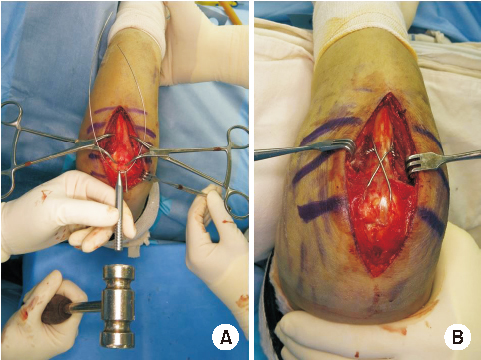

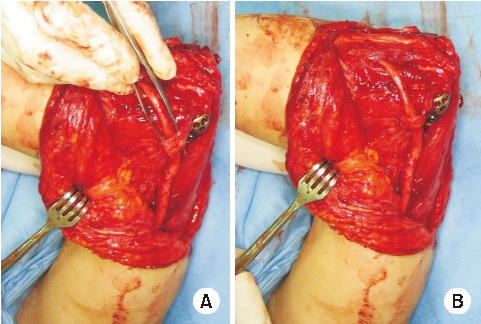

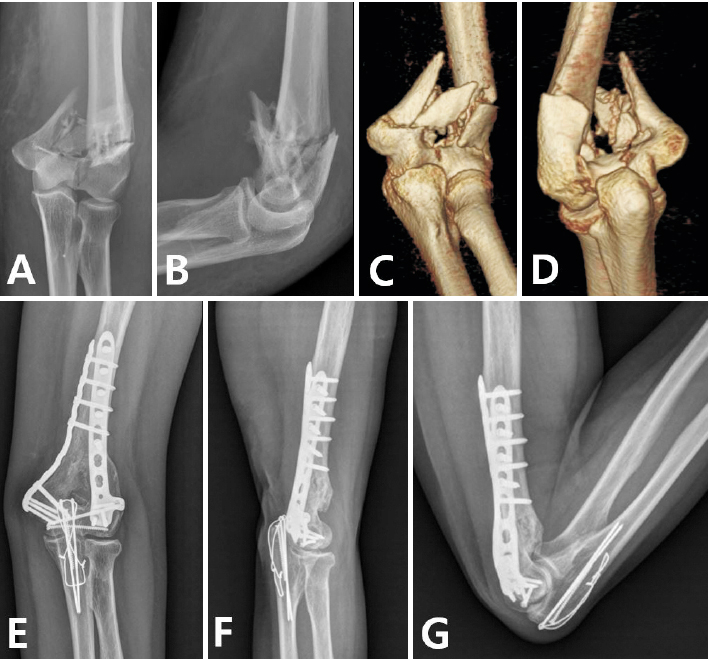

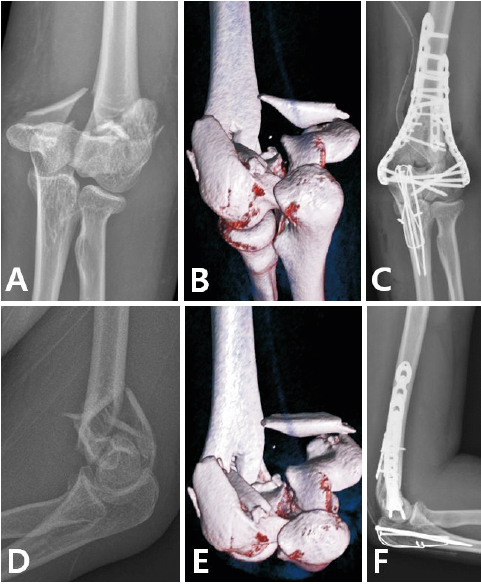
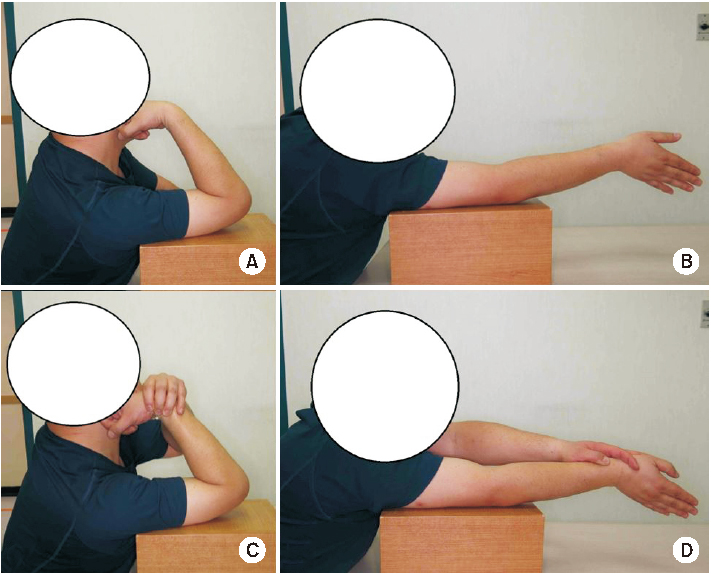

 PubReader
PubReader Cite
Cite

